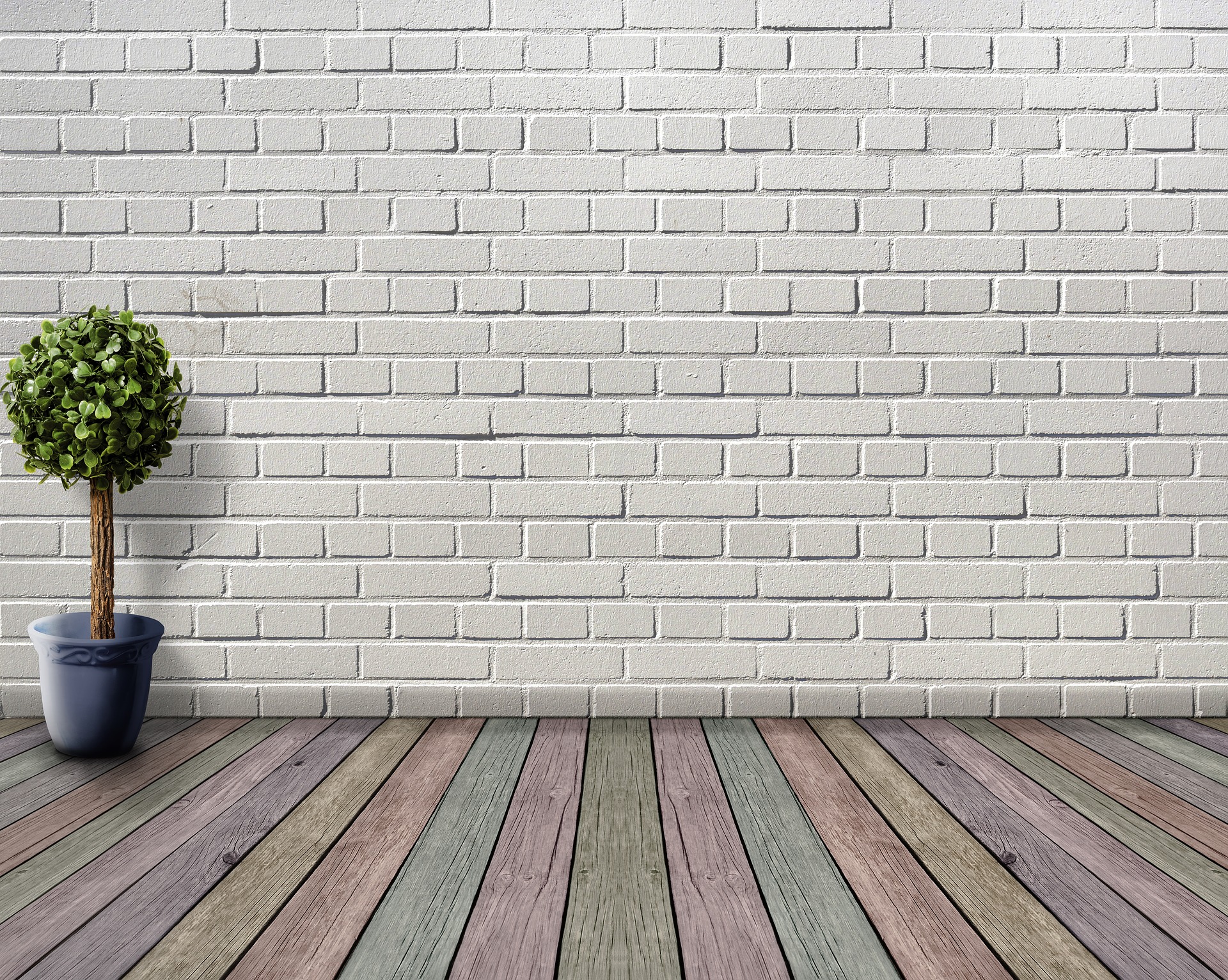Proper VCT floor care is not just an occupational task, it’s a science. When executed correctly, facilities will experience impressive results. When executed incorrectly, the results can be frustrating and an overall negative for the maintenance staff and facility management.
As with many scientific procedures, proper VCT floor care needs to follow certain routines to ensure desired results are achieved the first time. Errors in procedure will result in additional steps to correct the problems, leading to higher expenditures in time and labor costs. There will also be an increase in time where the flooring areas will be off-limits to traffic from staff, management, students, patients, guests, or customers.
We all know that not everything always goes according to plan every time. From rookies to industry veterans, circumstances will pop up to give us pause to analyze, understand, and correct. Below are the top five common floor finish questions, ANSWERED.
1. WHY ARE THERE STREAKS IN MY FINISH AFTER APPLICATION?
Streaks in floor finish following application can be caused by multiple factors. The three most common causes of streaks in floor finish are:
- Additional layers of finish were applied before the previously applied layers were fully dried.
- The finish was applied with a dirty or cross contaminated mop or other application tool.
- The finish was applied on a new VCT floor without first stripping off the factory applied protective coating.
Floor finish is best applied via a method of multiple thin, even coats instead of one thick coat. Thin, even coats will provide the best appearance and performance. However, an adequate drying period must be observed in between coats. Just because a finish is dry to the touch of your finger, does not necessarily mean it is dry enough to accept an additional layer of finish.
Recommended drying times can vary from 20 to 60 minutes, depending on the finish being used. Overly humid conditions will require an extension of drying periods. Running the air conditioner during the drying cycle is recommended since air conditioner units remove humidity from the atmosphere. If there is no air conditioning in the area you’re working, bring a portable dehumidifier unit to help. If you notice any “mop drag” while starting to apply a new coat, the base layer has not properly dried and is not yet ready to accept an additional layer.
Cross contamination from other chemicals can negatively interfere with the performance of the finish from the start. It is recommended that floor maintenance techs use clean, dedicated finish mops or finish applicators to apply finish. If using the traditional mop and bucket method, line the bucket with a plastic liner (a heavy-duty trash bag works well) to ensure no residue from other previously used chemicals will compromise the floor finish.
Most floor techs are aware of the need to strip away old finish layers before starting the new floor finish application process. However, everyone must be aware that this procedure must also be followed with newly installed flooring. New VCT flooring may not have multiple layers of finish like an older floor, but most will have a thin, protective coating that was applied at the factory to protect the VCT during shipping. That protective layer must be stripped away before finish application can start, otherwise streaking may occur.
2. WHY ARE THERE SCUFFS AND/OR SCRATCHES IN THE FLOOR FINISH?
- Floor finish layers were applied to the surface prior to previously applied layer(s) fully drying
- Floor is dirty/sand
- Floor finish restoration product not properly diluted
- If the scratches appear in a swirling, circular motion, then the buffing pad may be too aggressive
The application of a layer of floor finish on top of a layer that did not fully dry will lead to a soft coating which can scuff easily.
The scratches can result from an accumulation of dirt or sand on the surface. Dirt or sand tracked into a facility on the undersides of shoes can irritate the surface with the aggressiveness of sandpaper, leading to scratches and a diminished gloss. The best solution is to ensure there is proper matting at all entrances to trap as much dirt and sand as possible. Also, be sure maintenance staff members are following through on daily floor maintenance procedures. That includes vacuuming the mats, frequent dust mopping, and damp mopping with a neutral cleaner such as NCL® Mirage™ or NCL® Incrediloso Lavender™ to remove the dirt and sand and avoid this situation from occurring.
If floor restoration/buffing compounds are not properly diluted according to label instructions, the result can be a softened “top coat,” which is susceptible to scuffing.
When buffing/burnishing, be sure to use the proper pad. Darker floor pads, such as black pads, are aggressive and intended for use as stripping pads. Buffing and burnishing pads need to be on the lighter end of the spectrum. Tan or white pads are less abrasive and suitable for buffing or burnishing.
3. WHY IS THE FINISH DISCOLORED OR YELLOWED?
- Dirt is left behind on the floor during the maintenance cycle
- Exposure to sunlight
- Finish is old
- Lack of or failure of walk-off matting
Typically, a discolored or yellowed finish signals that dirt left behind during the cleaning cycle was ground into the finish or trapped under newly applied coats of floor finish. Dirt can also be transferred to the finish if there are soils of any kind on the pad used for buffing or burnishing. During routine maintenance procedures, if there is an excess accumulation of oil-based dust mop treatments on a dust mop, the excess oil can discolor the finish. Also, the use of a non-neutral, high alkaline cleaner can loosen up the finish and allow dirt and soils to become embedded, leaving the finish dull with a yellowish-brownish appearance.
Certain floor coatings contain ingredients that can be affected by sunlight and darken the appearance over time. Modern floor finishes are made with synthetic polymers and UV resistant components. When choosing a floor finish for areas where there is frequent exposure to sunlight, select one that offers UV resistance, such as NCL® 24/7®.
Even with perfect execution in all phases of the floor maintenance cycle, floor finishes will darken over time. When newly applied finishes are first cured on a floor, the finishes will be at their clearest. Over time the finishes will darken. The darkening will be an indicator that the surface needs to be scrubbed and re-coated, or possibly a full stripping and re-finishing may be required.
Dirt, sand, and other soils can play havoc on a finished floor. Prevention of these substances from interfering with the finish is the primary reason behind the importance of routine maintenance procedures, both dry and damp mopping. However, those tasks only remove dirt, sand, and soils once they’ve made their way onto the surface. One of the best ways to keep dirt, sand, and soils off the floor in the first place is to catch them in walk-off matting. These mats should be placed strategically at all entrance points to catch dirt, sand, and soils before they can scratch hard surfaces, scuff soft surfaces, and cause discoloration. Vacuuming these mats daily is a critical component of routine floor maintenance procedures.
4. WHY IS THE GLOSS NOT AS BRILLIANT AS EXPECTED?
This is probably the most common question asked by floor techs. It is asked so often mostly because there are so many reasons why the floor finish isn’t shining as brightly as expected. The reasons for the less-than expected shine can vary and are dependent on whether you are evaluating the initial lay-down gloss or the long-term overall gloss.
First, the most common reasons for little or no gloss upon initial floor finish application:
- While thin, even coats are recommended; using too little finish will not build a proper foundation and result in a less shiny floor coating.
- Dirty or cross contaminated application tools were used.
- The floor was not properly rinsed and/or wet vacuumed following stripping, resulting in a residue on the floor interfering with the floor finish.
Or, the most common reasons why a finish has decreased long-term gloss performance:
- An accumulation of dirt or sand on the floor can scuff or scratch the finish and knock down a floor’s shine. The same result can occur from incorrectly using pads that are too aggressive for buffing or burnishing.
- Old flooring surface has become too porous and some of the finish has absorbed down into the surface. In this case, strip the surface down thoroughly and start over. This time use an undercoating sealer. It is also likely this was caused by not applying enough layers of finish initially. Be sure to increase the amount of thin, even coats of applied floor finish to help prevent this from re-occurring.
- The floor has been improperly cleaned with cleaners that are too acidic or too high in alkalinity. Be sure to only use neutral floor cleaners during routine cleaning procedures.
5. HOW DO I EXTEND THE FLOOR’S STRIPPING CYCLE?
- Select the appropriate products.
- Follow the proper floor care maintenance cycle procedures.
- Follow scrub and re-coat procedures.
The first step in starting an extended floor maintenance cycle is to select the correct floor finish. Today there are modern floor finishes specifically produced for extending the floor care life cycle. NCL® 24/7® is an example of a floor finish that extends the typical floor stripping cycle from 18 to 36 months. It does so by resisting damage from routine cleaning and cleans easier, allowing easier scrub and re-coat procedures.
Once you have properly applied your floor finish, be sure the maintenance staff keeps up on daily routine maintenance procedures to ensure the floor finish performs at peak efficiency. This includes vacuuming walk-off matting, frequent dust mopping, and damp mopping with a neutral cleaner. The staff also needs to have a consistent buffing or burnishing schedule using recommended restoration products, such as NCL® Pop & Shine™ Gloss Restorer to harden the coating along with restoring and improving the gloss.
When the floor’s gloss appears to diminish, instead of conducting a full floor stripping, perform a scrub and re-coat procedure. This process will deep clean and remove the top layer of finish while keeping base layers intact and ready to accept a fresh coat of floor finish.
At Action Unlimited Resources, we partner with experts like National Chemical Laboratories to offer the best solutions for your organization.
You can find more helpful facility cleaning and maintenance tips from Action Unlimited Resources in our Blog section.




Enjoy this blog? Leave a comment or ask a question!